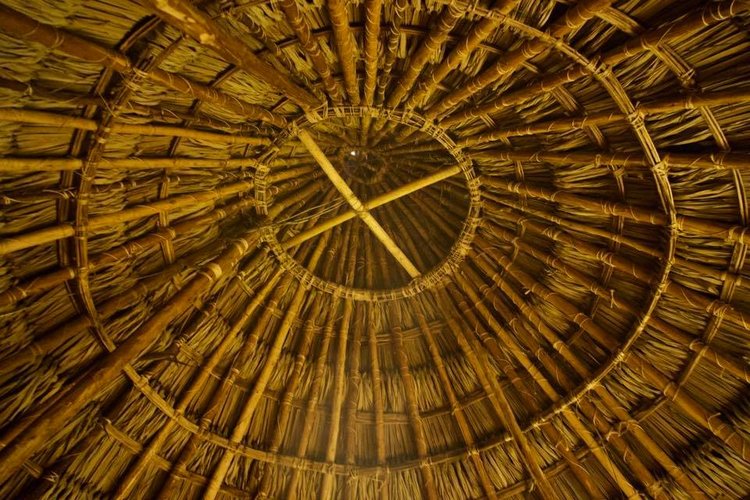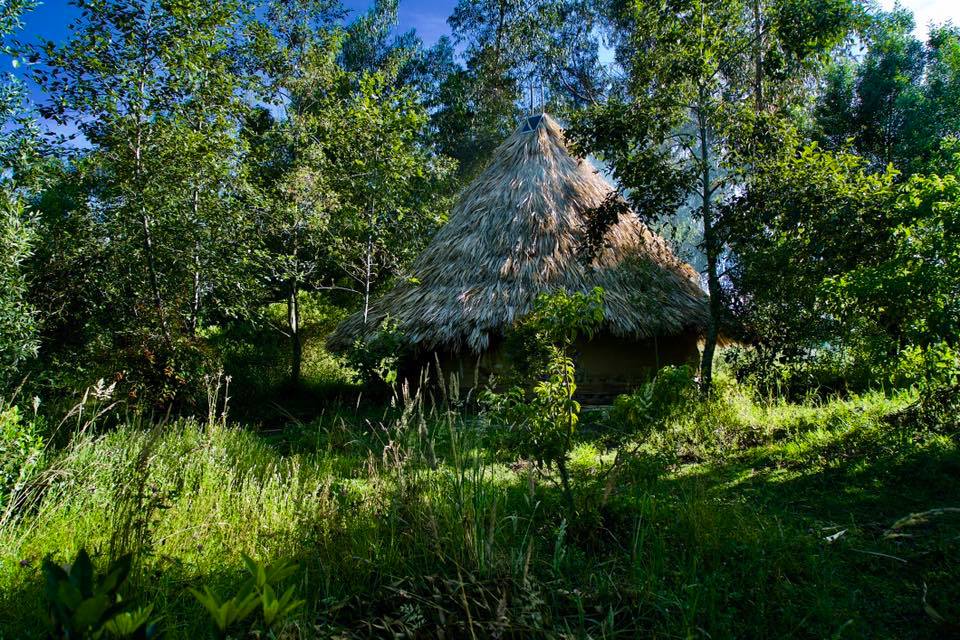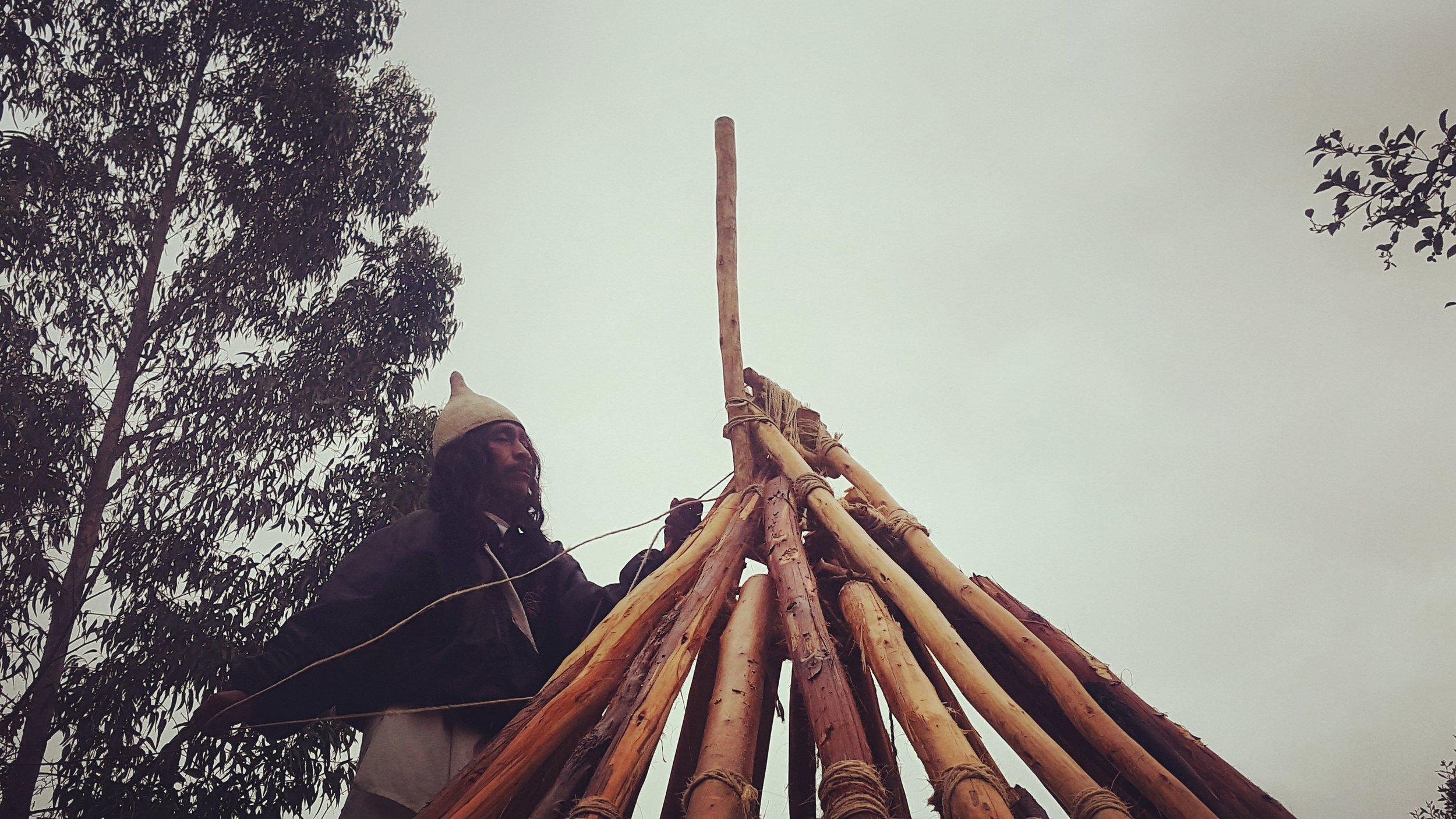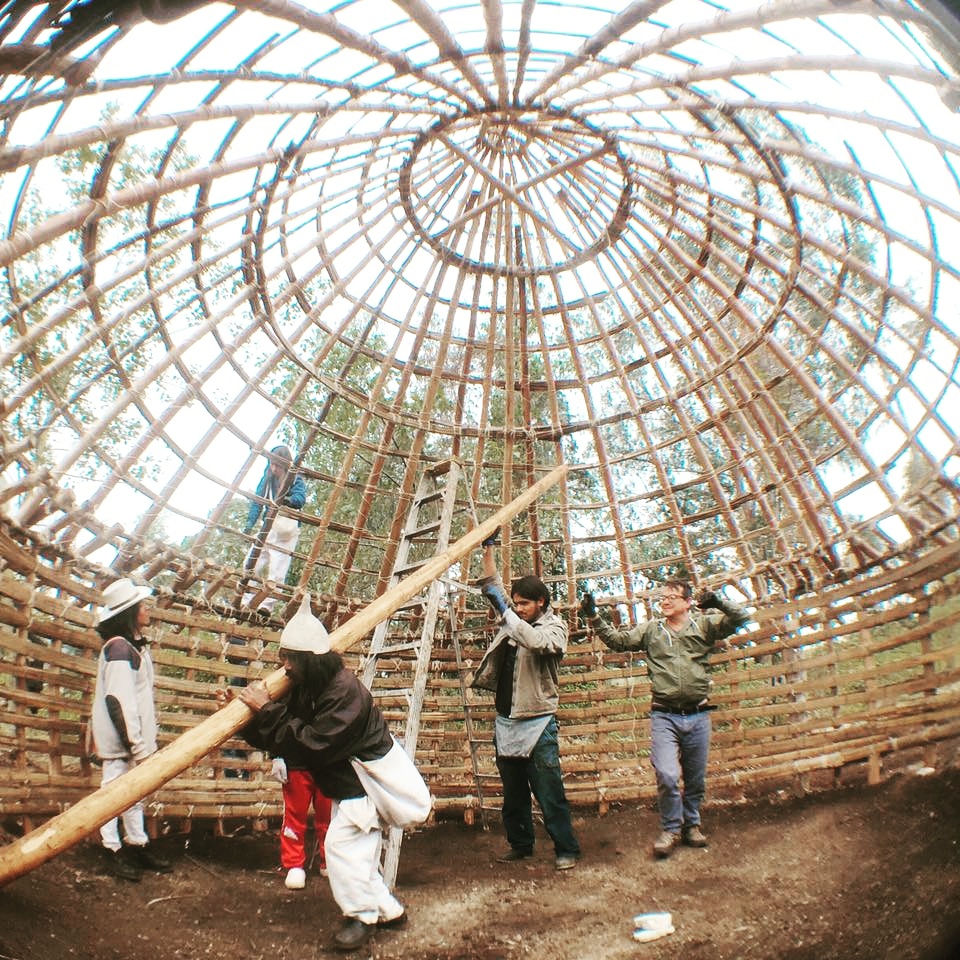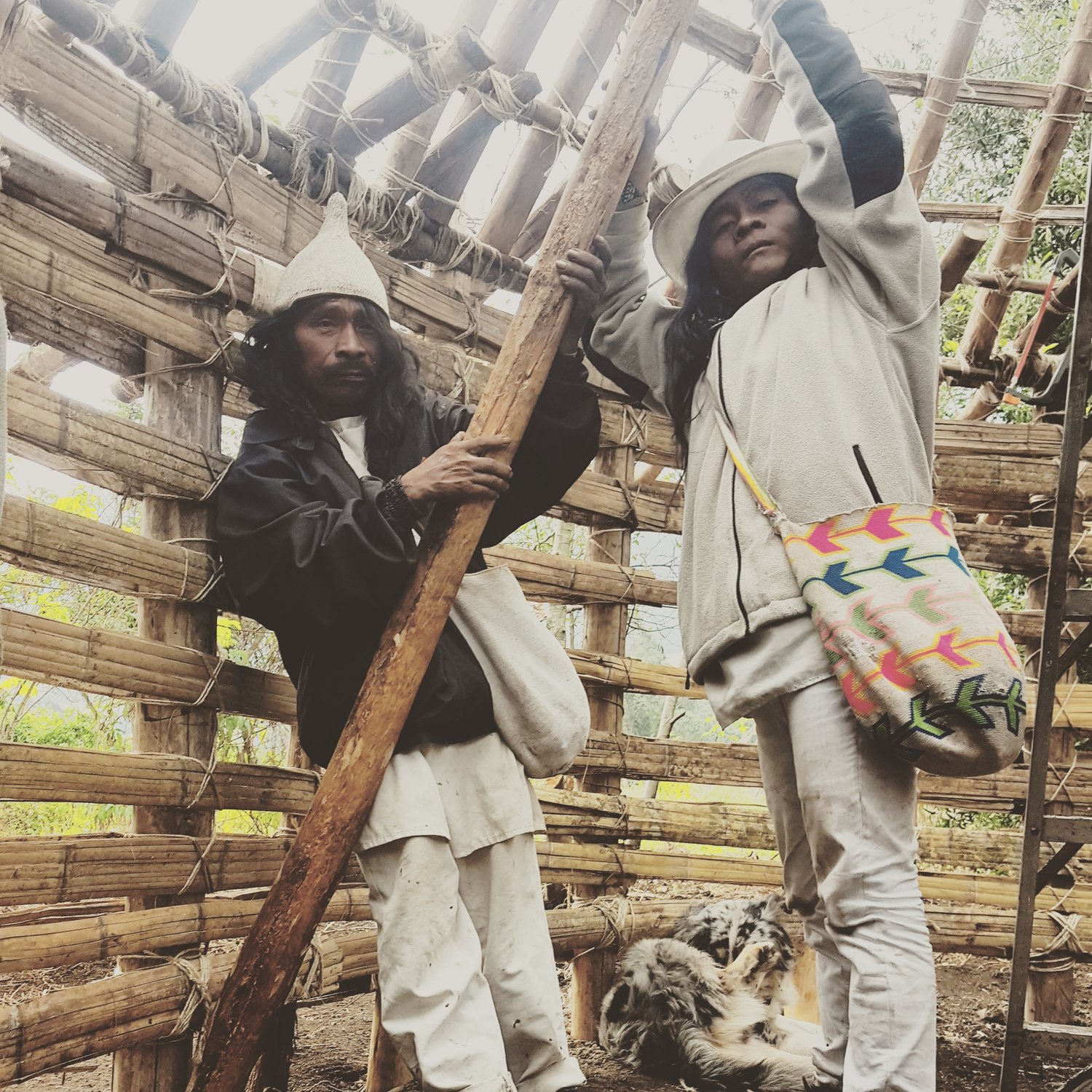ARquiTECTURA TEJIDA
Guiados por el Mamo Senchina Cogui de la Sierra Nevada de Santa Martha Desarrollamos una investigación sobre las arquitectura de Amarres que se materializo en una Maloka Femenina En el Centro de Capacitaciones en Tenjo Cundinamarca.
La arquitectura Vernácula de la Sierra emerge de un sistema constructivo que siembra y a su vez teje un gran canasto que representa y contiene el universo entero y su forma de habitarla es un ritual cotidiano que dibuja las ofrendas al alimento y al entorno que da vida.
La estructura principal se desarrolla con maderas verdes de la zona, Pino y Eucalipto en este caso, y el bahareque Jaulilla es abrazado con esterilla de guadua, los amarres antigua e idealmente hecho con bejuco La estructura principal de la maloca se entierra mientras que las columnas secundarias se siembran sobre piedras para una mayor temporalidad. El cuerpo de las paredes se compone de piedras y barro y los acabados se realizan con las arcillas y los suelos locales.
EL techo cónico se arma en el suelo usando las columnas de la circunferencia cómo formaleta y se sube a la altura ideal una vez estructurado en el piso. Esta forma constructiva es desarrollada para los lugares más remotos y requiere de mingas comunitarias para su ensamble. EL techo se teje en la palma local y al habitarla y prender el fuego en la cotidianidad se va inmunizando la madera verde utilizada
•
WOVEN ARCHITECTURE
Guided by Mamo Senchina Cogui of the Sierra Nevada de Santa Martha we developed an investigation about woven architecture building a Female Maloka at the Educational Center in Tenjo Cundinamarca. The vernacular architecture of the Sierra emerges from a constructive system that weaves a large basket that represents and contains the entire universe and its way of inhabiting it is a daily ritual that draws offerings to food and the habitat that represents life.
The main structure is developed with green woods from the area, Pine and Eucalyptus in this case, and the Jaulilla bahareque is hugged with guadua. the moorings ancient and ideally were tied with bejuco.
The main structure of the maloca is buried while the secondary columns are planted on stones for greater temporality. The body of the walls is composed of stones and mud and the finishes are made with clays and local sands. The conical roof is assembled on the ground using the columns of the circumference as at the formwork and once is assembled it is moved to the proper high with the communities help.
This constructive form is developed for the most remote places and requires community mingas for assembly. The roof is woven in the local palm and by inhabiting it and lighting the fire in everyday life the green wood is immunized

